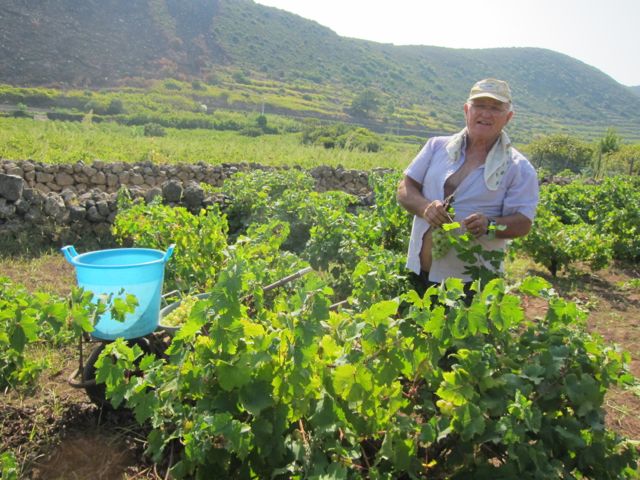
One of the sweetest things about my trip to Pantelleria last week was, well, very sweet. Even sweeter than I expected.
And I’m not talking about Passito. When I started to tell people I was headed to Pantelleria – a remote volcanic Italian island located between Sicily and Tunisia – almost every single person made the same three comments:
- Isn’t that Armani’s island?
- Bring me back some capers please.
- You’re going to be drinking a lot of passito.
To report back in:
- Yes, we saw Armani’s villa (from a distance)
- Yes, I brought you back some capers.
- And yes, we did drink a lot of passito.
While you’ve probably heard of Armani and certainly eaten some capers in your life, you may not be so familiar with passito. Passito is a sweet dessert wine made from dried zibibbo grapes that are native to Pantelleria.
While I love a well-made dessert wine as much as the next girl, dessert wines don’t love me. Sweet wines – or any mix of sugar and alcohol really – go down real easy, but I end up a uniquely painful kind of hangover the next day. Sad, but true.
So while I did taste – and love – excellent passitos from wineries including Donnafugata, Basile and Abraxas– I didn’t end up drinking as much of them as I would have liked.
But the Zibibbo grapes the wines are made from? That’s another story.
During the week I spent on Pantelleria the harvest was in full swing. As we made our way around the island’s narrow roads we came around hairpin curves hoping not to run into – literally – truckloads of the fat, green and intensely sweet grapes making their way to be processed.
While most of the plump fruit would make its way by boat to Sicily to be made into wine, or dried on the island to be made into Passito, some of the grapes stayed on the farms to be crafted into what turned out to be my three favorite discoveries of the trip.
Early one morning I headed out to explore with my friends Evan Kleiman and Ihsan Gurdal. Evan is a cookbook author and radio host and so is always on the hunt for stories and recipes. Ihsan is the owner of Formaggio Kitchen, in Boston, which imports amazing food from all over the Mediterranean. Me? Well, you know what I do.
We’d been in Pantelleria for a couple of days already, and so thought we were familiar with the rugged, somewhat barren, volcanic landscape. Black lava cliffs plunging dramatically into the sea and terraced plots of land running up steep mountains. Beautiful? Definitely. But in a rugged and somewhat intimidating kind of way.
So when we finally arrived into the valley of Ghirlanda it was as if we’d been transported to hidden Shangri-la. Protected by the fierce winds of the rest of the island this is one of the most fertile spots in Pantelleria, and one of the greenest. Rows and rows of grapes stretched from one end of the valley to the other, and climbed up the hills as well.
Our destination was Agrisola, a small farm that also produces (like almost everyone else on the island) various versions of caper and olive spreads. But our mission was to learn all about Ambrosia.
We’d discovered the stuff the day before at the end of a deliciously long lunch. Just when we thought we couldn’t eat one more bite, a small plate of cheese came out with a dish of what looked like honey. While I skipped the cheese, I did dip my finger into the honey, which turned out not to be honey at all.
“It’s Ambrosia”, explained Diego, who had seen my eyes pop out as I licked my finger clean. It was Diego Gabriele who had brought the Ambrosia to the lunch and who kindly invited us to his farm to learn all about this miracle stuff.
We started out in the fields where his uncle was doing the back breaking work of harvesting the grapes. The vines on Pantelleria are trained ‘al alberello’ as small, low lying trees. This helps protect them from the winds, as well as provide shade on the ground to preserve the night dew.
Diego then took us up to the farm where he explained exactly how Ambrosia is made. “We crush the grapes, just as if we were making wine. But then we filter the juice until it is clear and immediately cook it down, before it has a chance to ferment. Depending on how sweet the grapes are – and they are among the sweetest varieties there are – we add a bit of sugar and then boil the mixture. After about 40 minutes we have Ambrosia.”
Ambrosia is the perfect name, since the resulting taste is ambrosial. Because the juice is cooked very minimally it retains the fruitiness and floral qualities of the original grapes. (unlike saba or vin cotto from other regions of Italy which taste very ‘cooked’). Although it was fantastic when paired with cheese, I was already thinking how good it would be drizzled atop crepes or pancakes, or swirled into a cheese cake.
As we went into the small kitchen we were hit with the perfume of what we all thought was a pot of Ambrosia bubbling away. Instead it was yet another use of the sweet grapes: jam. “It’s a bit time consuming, since we pit each grape,” explained Diego, “And to get it right – with a minimal amount of cooking – we can’t make more than a kilo per batch. But it’s worth it.” Again, since the grapes start out so sweet the jam requires only about 10 to 15% sugar. Cooked for about a half hour the resulting jam is thick, almost syrup like, with the heavy skinned grapes still perfectly intact. Sweet, fruity and chunky.
After a trip to the small, walled giardino pantesco that is part of every farm on the island, we were back in our car, headed out to explore the rest of the island. While I had jars of both the jam and the Ambrosia to keep sealed until I got back to Rome, I happily munched on a fresh bunch of fresh grapes I’d just picked myself.
While my fresh grapes are long gone, and I’m waiting to open my jars of Ambrosia and jam for a special occasion, I’m at this very minute munching as I write. A bag full of raisins – dried from the zibbibo grapes – made it’s way to Rome too. While most of these dried fruits find their way into passito, this bunch escaped.
Lucky me.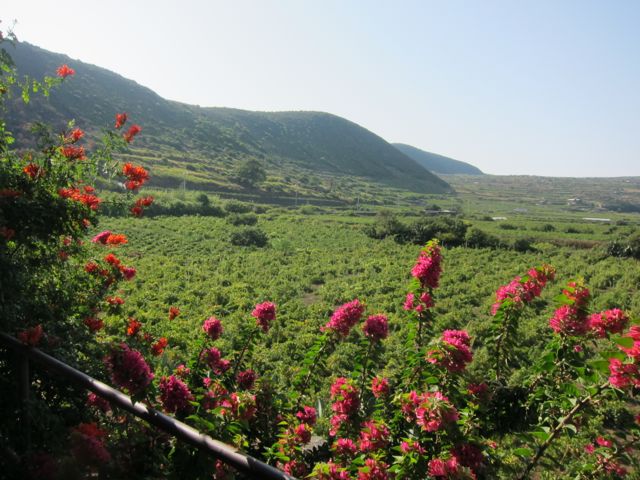
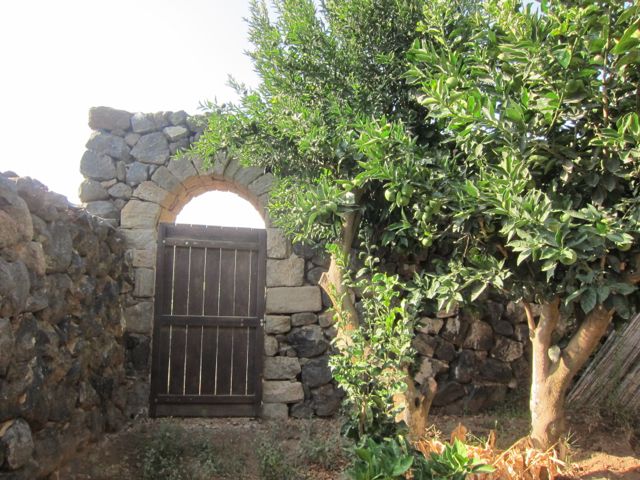
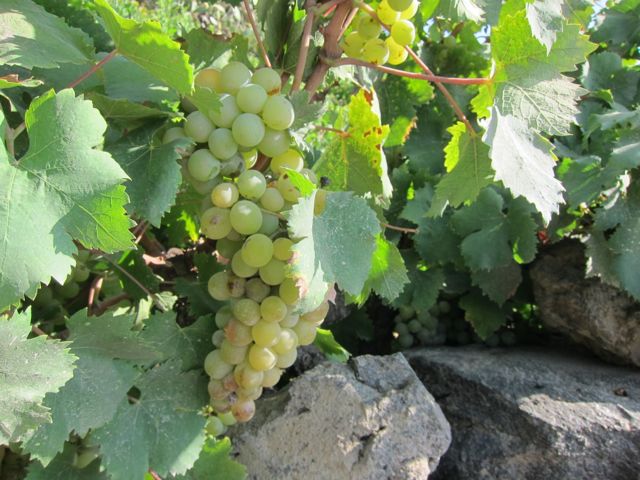
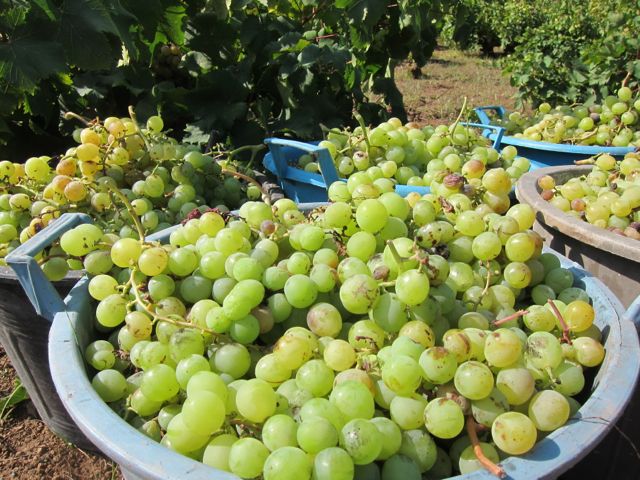
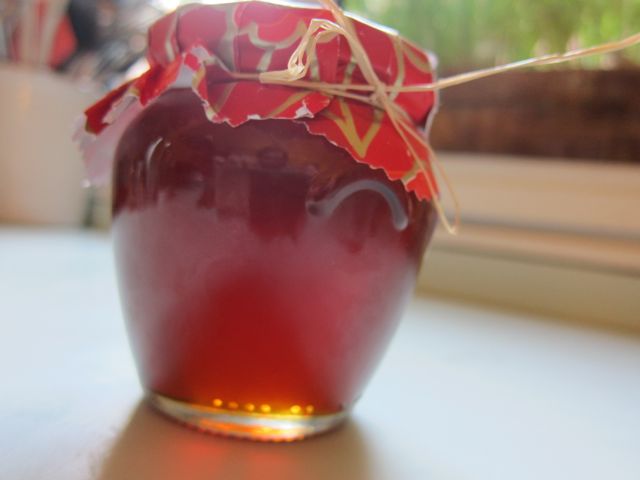
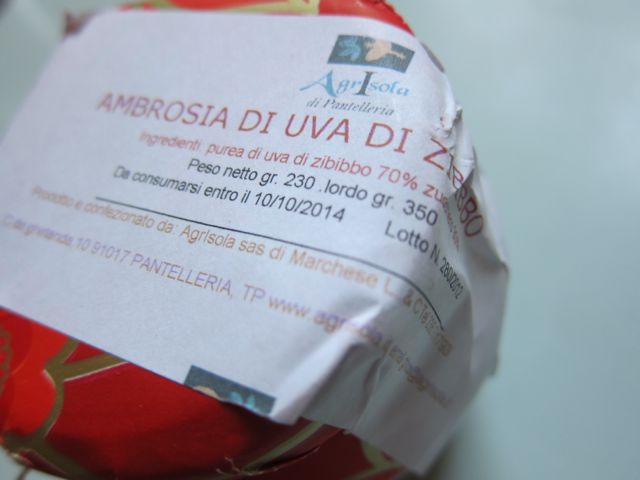
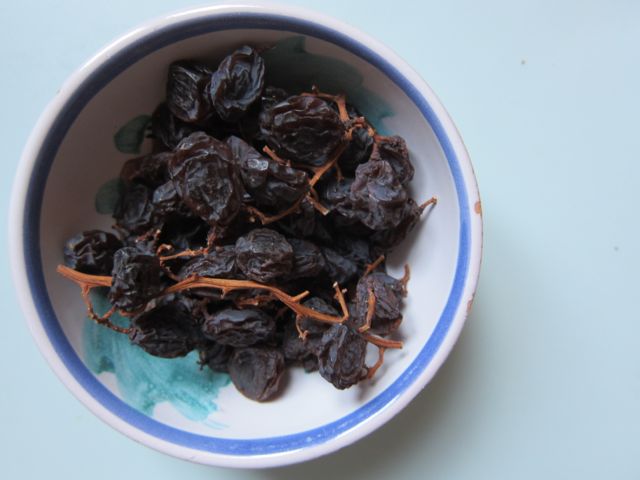
Agrisola
Tel. +39.338.9751793
Abraxas: any Santana connection?
Now, that’s a sweet discovery!
I don’t even know what ambrosia actually is, now that I think of it–it just has some vaguely Narnia kind of reference for me in my brain, like Turkish Delight! 🙂
And as I am now a wanna be Frenchie, I will add that the ever beautiful Carole Bouquet has a winery on the very same island. Take that, Mr. Armani!
I know, just like Turkish Delight!